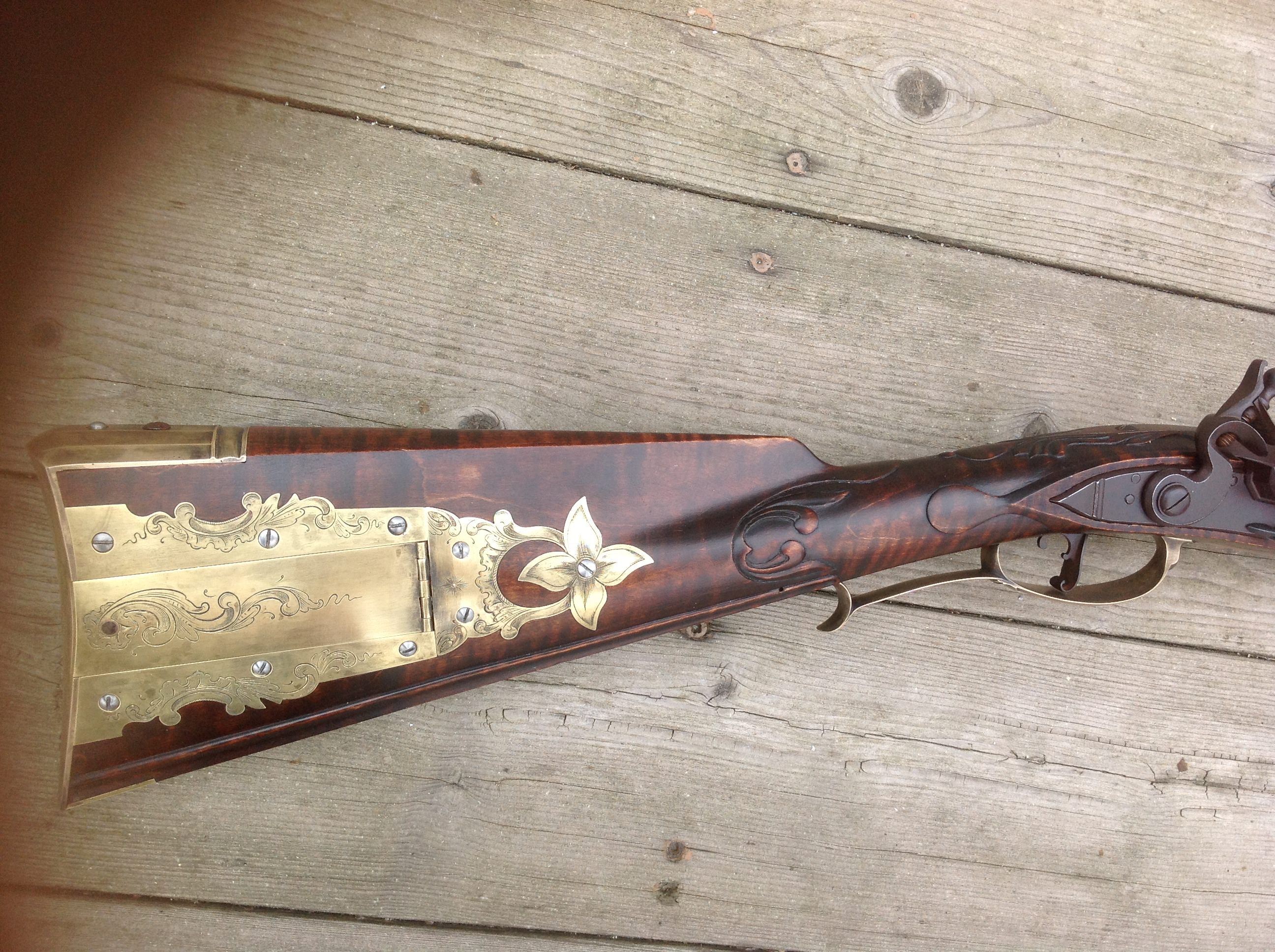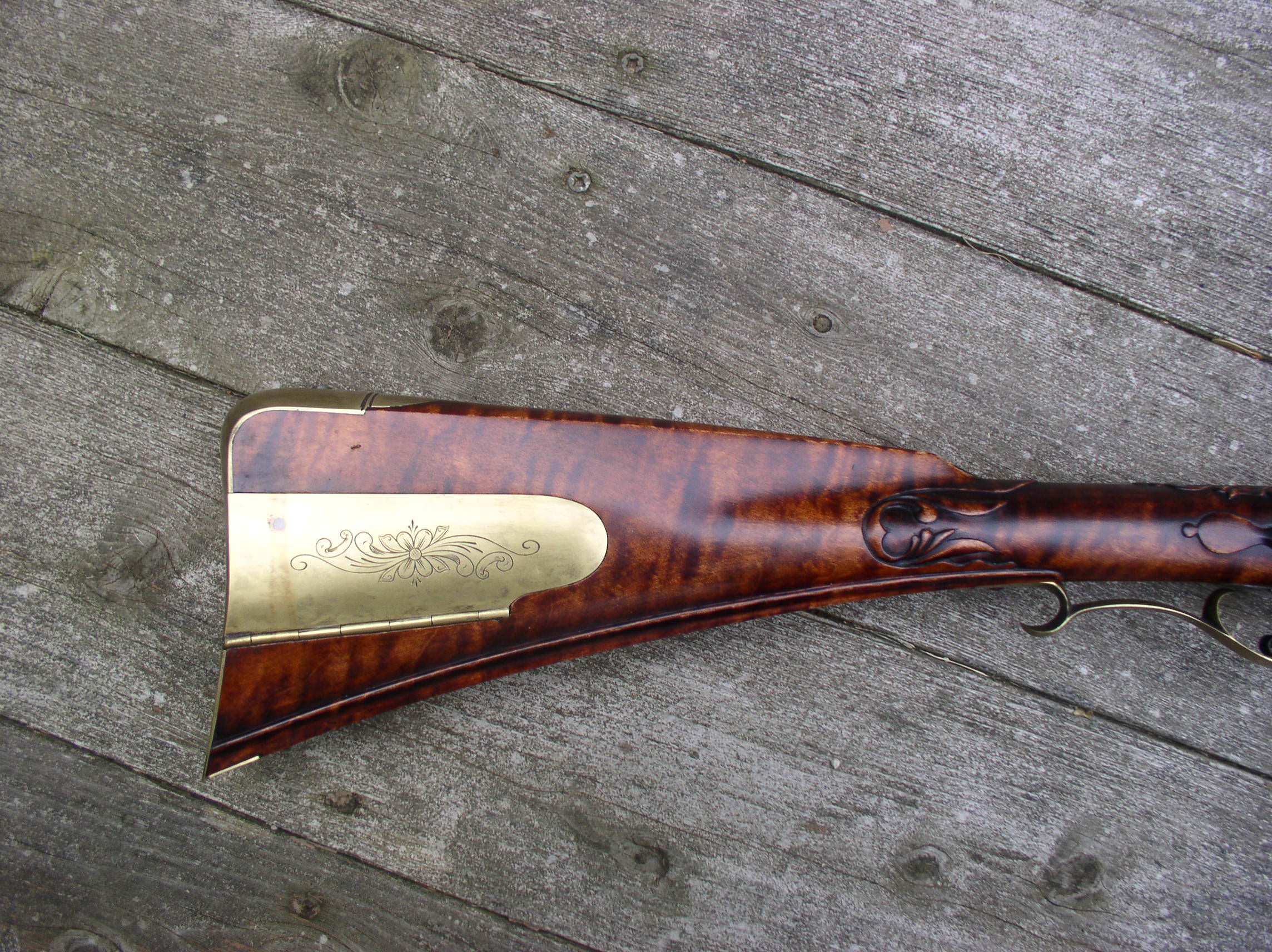-
This community needs YOUR help today. We rely 100% on Supporting Memberships to fund our efforts. With the ever increasing fees of everything, we need help. We need more Supporting Members, today. Please invest back into this community. I will ship a few decals too in addition to all the account perks you get.

Sign up here: https://www.muzzleloadingforum.com/account/upgrades -
Friends, our 2nd Amendment rights are always under attack and the NRA has been a constant for decades in helping fight that fight.
We have partnered with the NRA to offer you a discount on membership and Muzzleloading Forum gets a small percentage too of each membership, so you are supporting both the NRA and us.
Use this link to sign up please; https://membership.nra.org/recruiters/join/XR045103
You are using an out of date browser. It may not display this or other websites correctly.
You should upgrade or use an alternative browser.
You should upgrade or use an alternative browser.
Tru Oil?
- Thread starter chuck-ia
- Start date

Help Support Muzzleloading Forum:
This site may earn a commission from merchant affiliate
links, including eBay, Amazon, and others.
Staggerwing
40 Cal.
So, I am getting ready to finish a Chambers Pennsylvania Fowler with a walnut stock. My intentions are to use Tru Oil. This is the first walnut stock I've done. I've had some say to lightly sand it while the first coat is still wet to create a "slurry" to fill the pores. I've had others say to burnish the stock while the first coat is still wet. Others say to use a filler prior to the Tru Oil. What are the thoughts of this group?
Back to the Tru-Oil, I always used it full strength and all the comments were positive, but I was never really satisfied with the smoothness. I simply had not developed a technique at the time.
To me though it gave a deeper looking shine.
At the same time my cousin had a highly carved stock (not a ML) and he thinned his tru-oil then brushed it on. The result looked better than mine. It was almost perfectly smooth. Almost like the old Remington Finish on their BDL's.
These were just my observations at the time simple though they are. Sorry, no photo's of either. This was several decades ago.
To me though it gave a deeper looking shine.
At the same time my cousin had a highly carved stock (not a ML) and he thinned his tru-oil then brushed it on. The result looked better than mine. It was almost perfectly smooth. Almost like the old Remington Finish on their BDL's.
These were just my observations at the time simple though they are. Sorry, no photo's of either. This was several decades ago.
- Joined
- Dec 25, 2011
- Messages
- 8,797
- Reaction score
- 3,788
I think the density of the stock wood has a lot to do with how the finish turns out as well.
Soft walnut absorbs more and faster than does dense walnut and makes the rub out character different from what I can see.
That's another reason I really like the thin Miniwax Varithane for a seal coat. When dry it makes a uniform water proof base for the Tru-oil to over lay.
Soft walnut absorbs more and faster than does dense walnut and makes the rub out character different from what I can see.
That's another reason I really like the thin Miniwax Varithane for a seal coat. When dry it makes a uniform water proof base for the Tru-oil to over lay.
- Joined
- Nov 26, 2005
- Messages
- 5,021
- Reaction score
- 9,981
Hi Staggerwing,
All of those methods will work fine depending on what you want. I described the sanding slurry method in another thread on Brown Besses. It is a very efficient way to fill the grain on walnut (European and American black walnut) but it does obscure the grain a bit. If the wood is very plain with no figure or pretty grain to showcase, the slurry method works very well. It was often used on English guns of all qualities when the wood was plain and a smooth glass like final finish was desired. You can also fill grain pretty fast and not obscure grain by simply putting the first couple of coats of finish on your stock, let them dry and then burnishing the stock with a polished antler tip. This will push the grain down and smoosh finish into the open rays. However, it also produces a finish that may have ripples particularly if the wood has figure. On many guns that is fine and looks very period correct. Finally, you can just put the finish on in thin coats and slowly fill up the grain. I find this best if the wood has nice figure or grain and I want a pretty smooth final surface. It just takes longer.
dave
All of those methods will work fine depending on what you want. I described the sanding slurry method in another thread on Brown Besses. It is a very efficient way to fill the grain on walnut (European and American black walnut) but it does obscure the grain a bit. If the wood is very plain with no figure or pretty grain to showcase, the slurry method works very well. It was often used on English guns of all qualities when the wood was plain and a smooth glass like final finish was desired. You can also fill grain pretty fast and not obscure grain by simply putting the first couple of coats of finish on your stock, let them dry and then burnishing the stock with a polished antler tip. This will push the grain down and smoosh finish into the open rays. However, it also produces a finish that may have ripples particularly if the wood has figure. On many guns that is fine and looks very period correct. Finally, you can just put the finish on in thin coats and slowly fill up the grain. I find this best if the wood has nice figure or grain and I want a pretty smooth final surface. It just takes longer.
dave
Staggerwing
40 Cal.
Thank you, Dave. Your comments have helped. The butt of the stock has a lot of figure that I want to stand out. I may just apply several thin coats. I will post pics once I start the process.
Back about 1950 i got a copy of Roy Dunlap's book "Gunsmithing" I was and still is a must read for budding gun smith and his advice about gun finishes was the best advice one could wish for , however then the mixture of spar varnish and boiled linseed oil gave a finish better than about every thing else for looks and performance .but over the years it seems that the spar varnish and boiled oil sold now has been modified maybe synthetic because the material and the method does not produce the same results and "True oil" is about as close as you can get .. To get the best finish with true oil once your initial coat is on is to apply thin coats and use steel wool to rub it down to the woods surface and do this with every coat until the wood grain is properly filled then apply as many coats as you wish to get the finish that satisfies you .. If you dont want a high gloss just go over the finish coat with steel wool nice and fine and this will give you a very usable dull look
Hi Dave....seeing I don't want a shiny stock and also want a finish that doesn't take an extended period of time to dry, the finish of the LRs shown below have 2 coats each of first LMF sealer and then Wahkon Bay Trucoat. The LR is completely finished in 36 hrs.
The resultant finish is dull and requires a good 10 mins rub w/ a fluffy towel to produce some sheen.
What's your opinion of the 2 different products I use?.....Fred


The resultant finish is dull and requires a good 10 mins rub w/ a fluffy towel to produce some sheen.
What's your opinion of the 2 different products I use?.....Fred


- Joined
- Jun 12, 2005
- Messages
- 7,970
- Reaction score
- 964
OK, Fred - you got me ”¦ does anyone have a towel handy?
I need to wipe the drool off my keyboard.
I need to wipe the drool off my keyboard.
Similar threads
- Replies
- 7
- Views
- 445
- Replies
- 3
- Views
- 223



